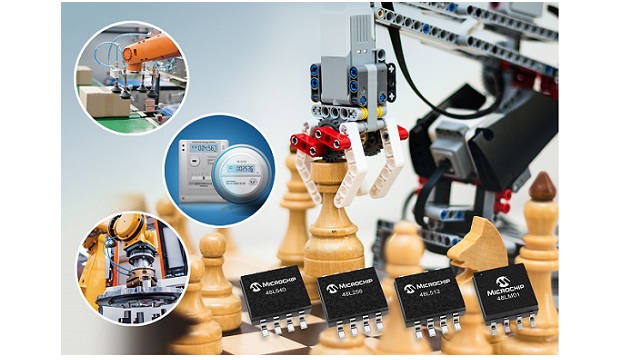From smart meters to manufacturing lines, applications that require repetitive task data logging must be able to automatically restore content if power is disrupted during processing. Current low density (64 Kb to 1Mb) nonvolatile serial RAM (NVRAM) solutions used for these datalogs are typically the highest price-per-bit memory in the resulting end products. Microchip Technology Inc. announced a new family of Serial Peripheral Interface (SPI) EERAM memory products that offer system designers up to 25 percent cost savings over the current serial NVRAM alternatives. The family introduces four reliable SPI densities to Microchip’s EERAM portfolio, ranging from 64 Kb up to 1 Mb.
EERAM is a standalone nonvolatile RAM memory that uses the same SPI and I2C protocols as serial SRAM, enabling devices to retain SRAM content during power loss without using an external battery. All nonvolatile aspects of the part are essentially invisible to the user. When the device detects power going away, it automatically transfers the SRAM data to nonvolatile storage and moves it back to the SRAM once power returns to the part. In manufacturing lines, for example, stations handle up to millions of tasks over their lifetimes, and lost data during a task can require overhauling or discarding items. EERAMs automatically store SRAM content in these settings, allowing the manufacturing line to resume where the task was disrupted.
The primary reason EERAM is available at a lower price point is the use of standard Complementary Metal-oxide-semiconductor (CMOS) and Flash processes. Because these are the highest volume and most widely used processes, they offer the best reliability and lowest cost in the industry. Alternative solutions such as Ferroelectric RAM (FRAM) use a specialty process, resulting in much higher costs and unstable long-term supply. The new EERAM family comes with Microchip’s customer-driven obsolescence practice, which helps ensure availability to customers for as long as needed.
“EERAM gives system designers the reliable, cost-effective nonvolatile RAM solutions their systems require. We received a great response to our initial launch of 4 Kb and 16 Kb densities a few years ago,” said Randy Drwinga, vice president of Microchip’s memory products division. “This new family offers our first SPI interface products and extends to one megabit, giving customers more options to meet their system design needs.”
For more information, visit: www.microchip.com








